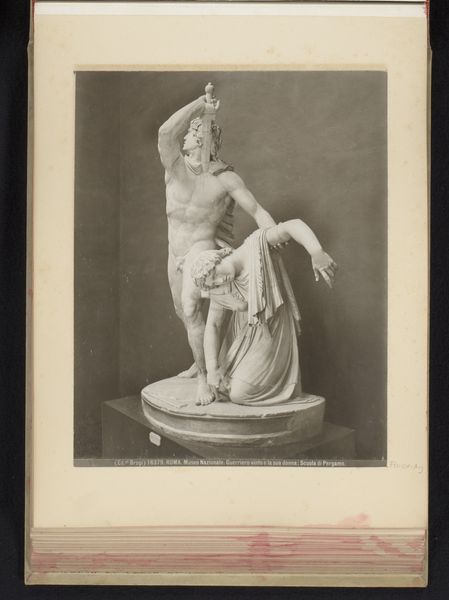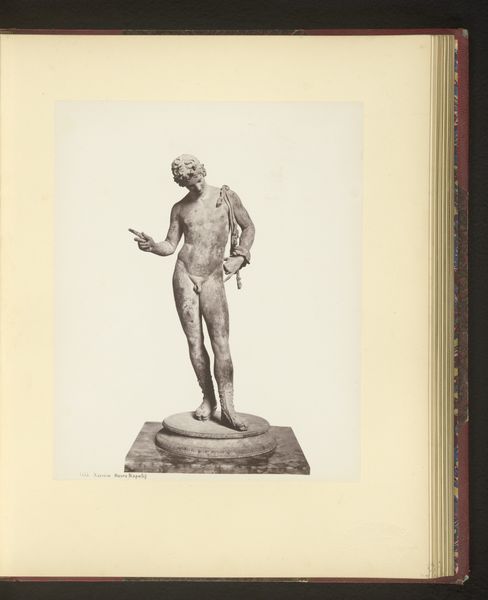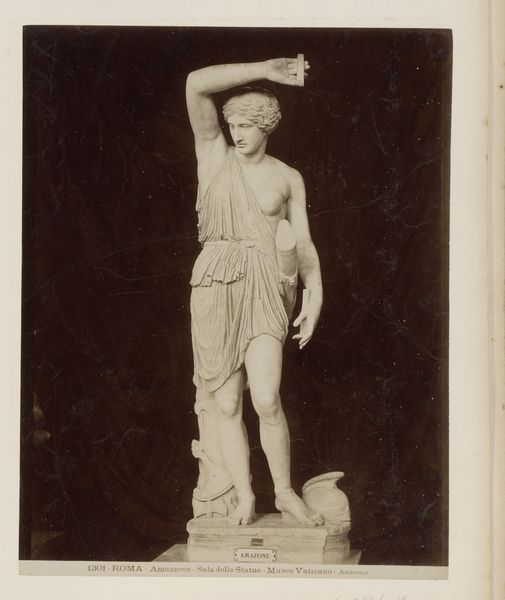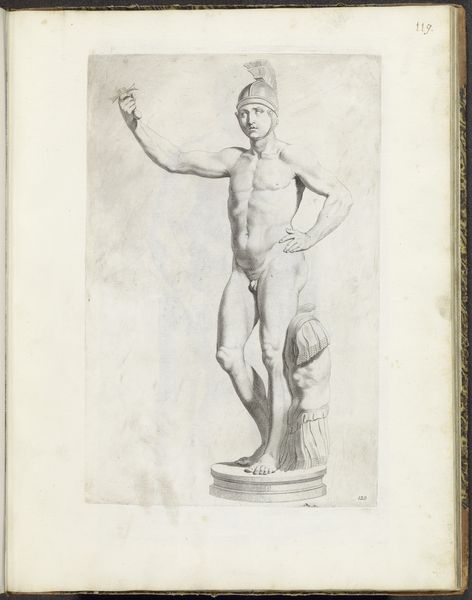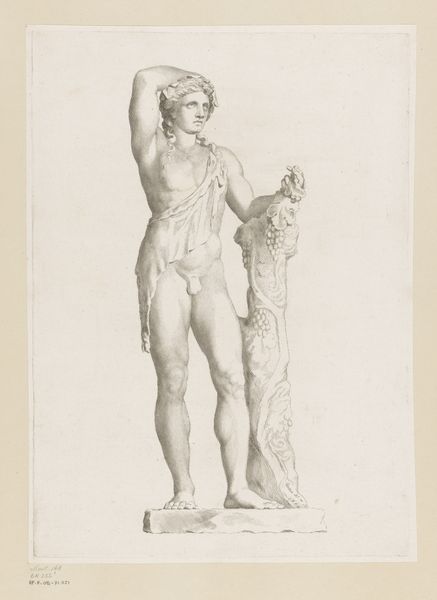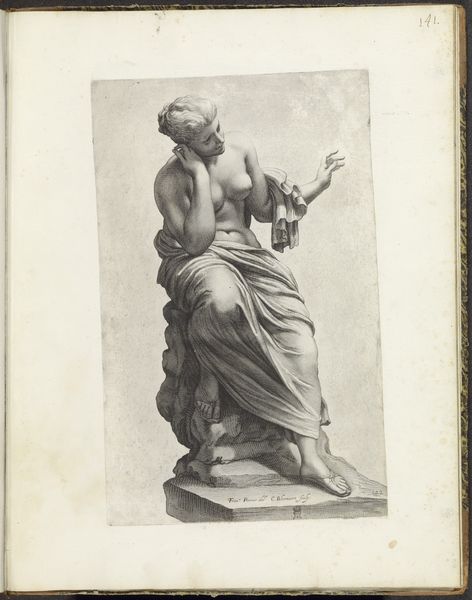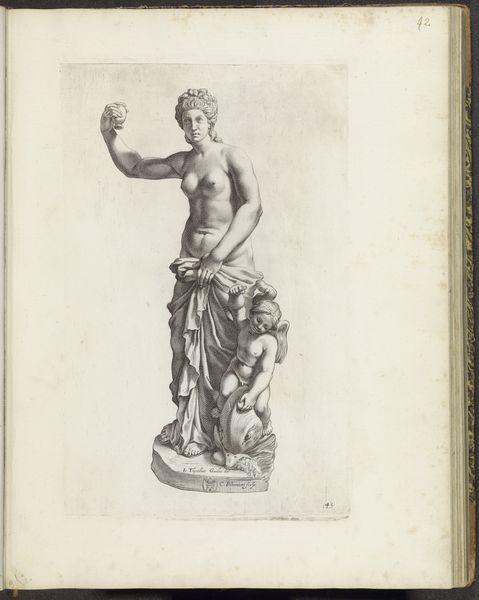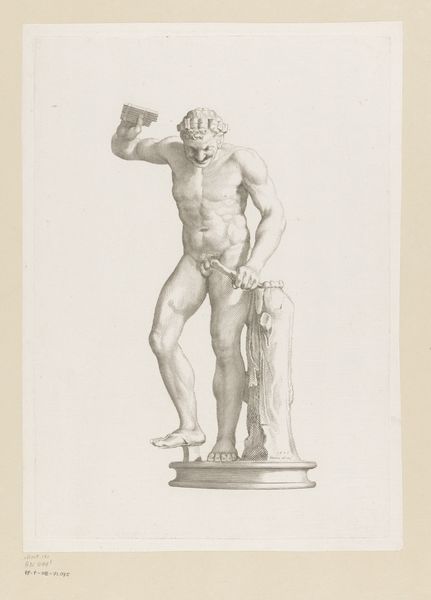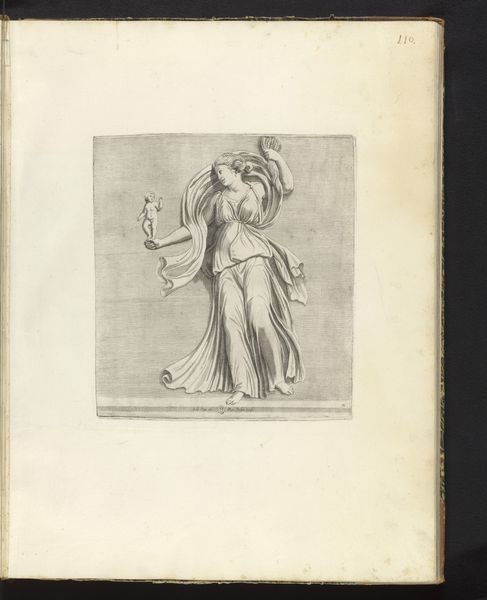
drawing, print, engraving
#
portrait
#
drawing
#
neoclacissism
# print
#
landscape
#
classical-realism
#
figuration
#
history-painting
#
engraving
Dimensions: Plate: 24 7/8 × 17 15/16 in. (63.2 × 45.5 cm) Sheet: 31 in. × 21 15/16 in. (78.7 × 55.7 cm)
Copyright: Public Domain
Editor: Here we have Domenico Marchetti's "Perseus Triumphant," an engraving from 1813, currently residing at the Met. The stark contrast between the white background and the sharply defined figure is quite striking. It definitely emphasizes the figure’s heroic musculature and the, uh, gruesome head of Medusa. What aspects of the work stand out to you? Curator: What interests me most about this piece is how it embodies the Neoclassical obsession with reinterpreting and essentially commodifying classical narratives. Look at the precision of the engraving – it mirrors the rational, controlled, and seemingly 'objective' aesthetics prized during the period. It transforms labor into a sleek, almost mass-producible image, doesn't it? Editor: Mass-producible, you say? How so? It's clearly very detailed. Curator: Precisely. Think about the economic structures at the time. Engravings allowed for wider distribution of imagery, extending the reach of these Neoclassical ideals. Each print, painstakingly crafted, served as a form of cultural capital, reinforcing certain power dynamics and notions of heroism. What are your thoughts on the historical implications? Editor: I never thought about prints being a product of cultural power. I just figured it was the artist recreating an antique sculpture. Curator: And it is that. However, the material process itself is integral. Consider the labor involved in creating the plate, the number of prints made, and who ultimately had access to them. The art world functions within a much wider scope of society and production than we typically give it credit for. Editor: I guess so. So, it is about more than just aesthetics. It's about labor and societal influence? Curator: Exactly. By interrogating the means of production, we uncover deeper meanings embedded within this seemingly simple depiction of Perseus' triumph. Editor: It’s incredible to think how the materials and processes behind creating this image open up completely new ways of interpreting it. Curator: Indeed, seeing art as deeply embedded in its social and economic context broadens our understanding immensely.
Comments
No comments
Be the first to comment and join the conversation on the ultimate creative platform.

